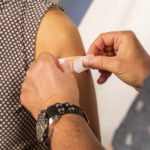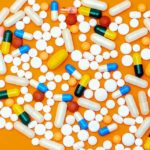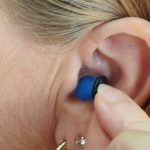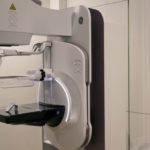What are the symptoms of andropause?
The term andropause has been used to describe a reduction in the level of male hormone – testosterone – concentration with advancing age. This terminology is actually a misnomer because unlike menopause in females, the reduction of testosterone does not occur abruptly at a particular age. This condition has been reported to occur in about 30% of men in their fifth decade of life.
Scientific studies have proven that testosterone reduces with advancing age and the reduction starts in the third decade and progresses gradually. After the age of 30 years, circulating testosterone falls at a rate of 1% every year. This is also related to a higher level of sex hormone-binding globulin protein which binds with testosterone. Because of this binding, the free or active form of sex hormone in the circulation is reduced. The age-related fall of testosterone is faster in people with obesity, diabetes, hypertension, chronic disease, and long-term medical treatment. Scientific studies have shown that dysfunction of testes due to reduction of Leydig cells is the main cause of declining testosterone levels.
Symptoms of andropause
These clinical features may be difficult to distinguish from changes that occur with normal aging. Since the androgen deficiency may develop gradually, the symptoms vary in different people. The age-related decline in testosterone should be distinguished from classic hypogonadism due to diseases of the testes, the pituitary, or the hypothalamus.
A lack of interest in sexual activities is noticed by many men in their forties and fifties. Many of them complain of difficulty in getting erections or failure to maintain an erection for a sufficient duration. Some of them have weaker erections insufficient for successful coitus. There is a general lack of energy, depression, irritability, and mood swings. Other behavioral changes include depression, memory lapses, nervousness, fatigue, and inability to get adequate sleep. There is also a reduction in total body muscle mass and increased fat. Hot flashes have also been reported. The bones become brittle due to osteoporosis and there is an increased risk of heart disease.
Management
A scientific study showed that the sexual and physical symptoms were associated with a testosterone level less than 320 ng/dl. Subsequent testosterone therapy in these patients resulted in a significant improvement. It improved bone mineral density in the spine. There was also an improvement in the libido, though the erectile function remained the same. The depression scores also showed no improvement. It is also recommended that screening for the level of testosterone is not advised for all older men. It should be restricted for symptoms with lab evidence of androgen deficiency.
When this condition is suspected, a morning blood sample is tested for testosterone level. A consistently low level less than 300 ng/dL suggests testosterone deficiency. If the morning levels are higher than 350, it surely rules out this condition.
Treatment
Testosterone replacement therapy is used for treatment in these patients. This treatment may provide relief from the symptoms and result in an improvement in the quality of life. The aim of this treatment is to restore the blood testosterone levels to normal and to correct features of its deficiency. This hormone is available in many formulations like capsules, skin patches, gels, and injections.
Oral testosterone – these include 17-methyl testosterone and oxandrolone, fluoxymesterone. Their important side effects include jaundice and liver tumors. People with liver disease should avoid these drugs.
Testosterone injections – an oily preparation of testosterone is used as it has a longer duration of action. It is injected into the muscles every 2 to 4 weeks. It comes as testosterone enanthate, cypionate, and undecanoate injections.
Skin patches – they result in normal blood levels of testosterone 4 to 12 hours after application. It may cause skin irritation in some patients.
Gel – the gel is applied to the skin. It is available as Androgel and Testim. The dose is adjusted based on testosterone level. The advantages of the testosterone gel include ease of application and flexibility of dosing. Appropriate precaution should be taken so that the applied gel should not come in contact with children of the female partner.
A medical consult should be taken if the above symptoms are noticed. This treatment should be under medical supervision as side effects of testosterone therapy are known. Men with prostate cancer, liver and kidney disease should not take this treatment. Lifestyle changes such as regular exercise, stress reduction, meditation, and good nutrition should also be incorporated for a better outcome.




























